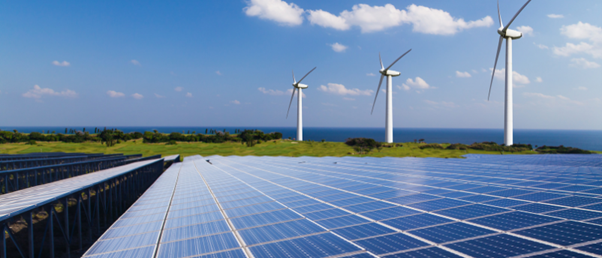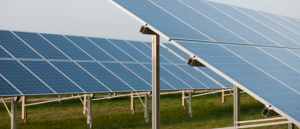Collaboration is key: solar and wind energy sufficient for industrialized energy demands

Researchers find that a combination of solar and wind power could supply 85% of US energy, which would increase if energy storage systems were introduced and improved.
Amidst discussions at the UN’s COP26 conference held in Glasgow (UK), more attention than ever is on renewable energy sources and ways to achieve global net-zero emissions. A recent collaborative study by researchers at Tsinghua University (Beijing, China), Stanford University (CA, USA) and the University of California, Irvine (CA, USA) showed that energy demands could largely be met using solar and wind energy.
Critics of renewable energy may question if these sources can provide enough energy for heavily industrialized nations, especially when relying on temperamental sources like the weather. However, Steven Davis, co-author of the paper, says “wind and solar could meet more than 80% of demand in many places without crazy amounts of storage or excess generating capacity, which is the critical point.”
The team retrospectively analyzed hourly energy data starting in 1980 over 39 years from 42 countries to calculate energy demands. Using this data, they determined whether current solar and wind power generation would be adequate and found that 72–91% of the hourly energy requirements in the countries analyzed could be supplied using these renewable sources. This would increase to 83–94% with 12-hour storage systems.
 Microorganisms lead the way in adapting to extreme environments
Microorganisms lead the way in adapting to extreme environments
Researchers have profiled microorganisms that have adapted to living on photovoltaic panels and are set to explore how they could be utilized in the maintenance of the panels.
“Historic data show that countries that are farther from the equator can occasionally experience periods called ‘dark doldrums’ during which there is very limited solar and wind power availability,” said Dan Tong, who led the research. “One recent occurrence of this phenomenon in Germany lasted for two weeks, forcing Germans to resort to dispatchable generation, which in many cases is provided by fossil fuel-burning plants.” Improving long-term storage and increasing energy generation for storage would alleviate the problems of unpredictable sources.
The study also found countries with more consistent and reliable sunlight, found at a lower latitude, could use solar energy all year round and would have a smoother transition to renewable resources.
For those of us experiencing infrequent sunny days, collaboration between nations on the same landmass would reduce the impact of geophysical conditions. For example, in Europe, “a lot of consistency and reliability could be provided by a system that includes solar resources from Spain, Italy and Greece with bountiful wind available in the Netherlands, Denmark and the Baltic region,” explains Tong.
Solar and wind energy will be one piece of the puzzle to achieve net-zero emissions and a move towards a sustainable future. “It comes down to the difference between the difficult and the impossible,” says Davis. Adding that “it will be hard to completely eliminate fossil fuels from our power generation mix, but we can achieve that goal when technologies, economics and socio-political will are aligned.”